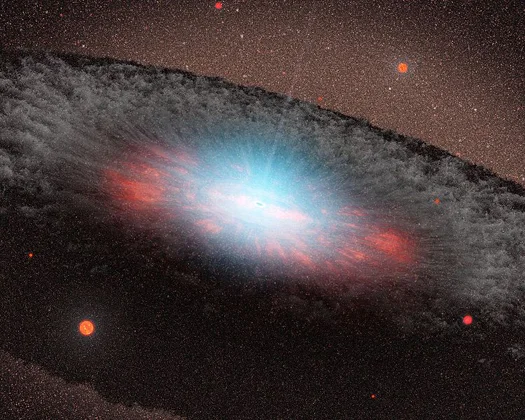
Astronomers from Caltech, leading two teams, have identified the largest-ever reservoir of water in the universe, situated a staggering 30 billion trillion miles away. This colossal find is within a quasar, a highly luminous and violent cosmic object.
Surpassing the combined water content of Earth’s oceans by at least 140 trillion times, this water vapor discovery is particularly noteworthy due to the quasar’s extreme distance. The quasar’s light, taking 12 billion years to reach Earth, offers a glimpse into the universe’s state when it was a mere 1.6 billion years old.
Matt Bradford, a scientist at NASA’s Jet Propulsion Laboratory, emphasized the uniqueness of the quasar’s environment, producing an immense mass of water. This finding reinforces the notion that water is ubiquitous in the universe, even in its early stages.
Quasars derive their power from massive black holes consuming surrounding gas and dust, emitting substantial energy in the process. While the presence of water vapor in the early universe was anticipated, its role as a crucial trace gas aids in understanding the quasar’s nature.
The observed quasar exhibited water vapor distributed around the black hole within a gas region spanning hundreds of light-years, indicating unusually warm and dense conditions by astronomical standards.
This discovery underscores the advantages of millimeter and submillimeter wavelength observations. To fully unlock the potential of this research avenue, astronomers are planning the construction of CCAT, a 25-meter telescope in the Atacama Desert, Chile. CCAT aims to enable the exploration of some of the earliest galaxies in the universe.







